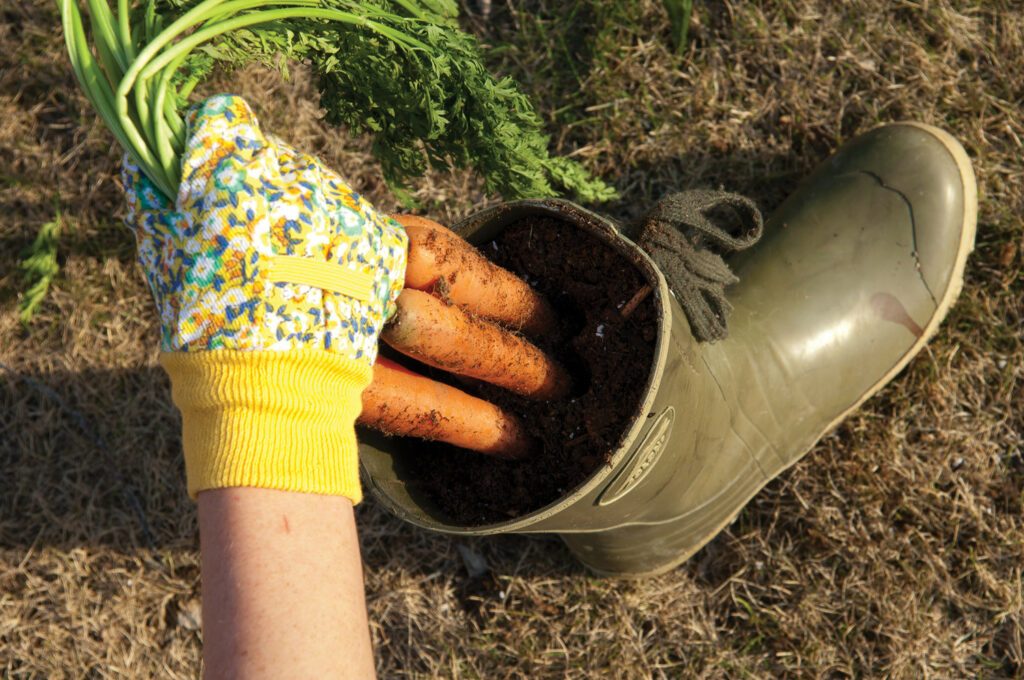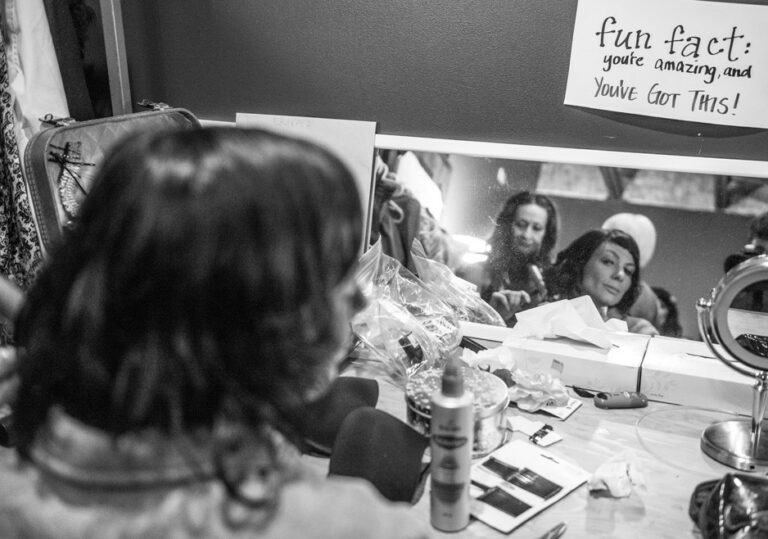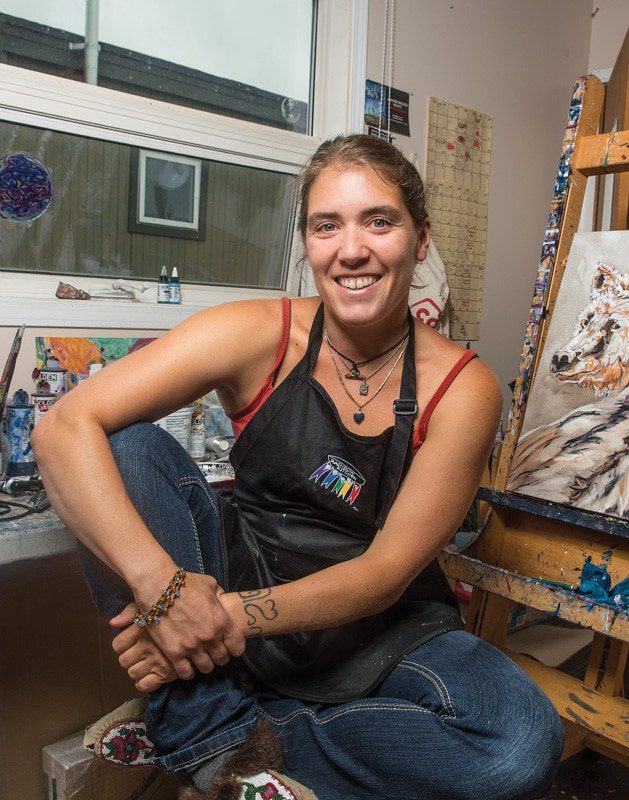Thankfully, you’re not alone, and help is available
by France Benoit
Each spring, many Yellowknifers experience symptoms of the affliction known as Growing Food in Small Spaces Syndrome (GFSSS). Those suffering look at the amount of space they have to grow food in and begin to experience chest pains or anxiety attacks. They want more space to grow food yet feel helpless. Feelings of exhaustion and confusion may emerge as patients are not able to surmount their feelings of inadequacy, especially when they see other people’s gardens or photos of large commercial greenhouses. Symptoms are particularly acute in late spring and early summer. In this sense, it can be regarded as a seasonal disorder.
Diagnosing GFSSS
If you answer yes to any of the following questions, you are suffering from GFSSS: Do you crave kale and want to grow this hardy superfood? Are you looking forward to the Dehcho Bridge because seedlings may arrive earlier in the season? Have you decided to hang the picture of your first garden (or the family farm) in your living room? Do you long to sink your fingers in dirt? Have you cringed at the cost of buying fresh produce?
Natural remedies
Thankfully, help is available in Yellowknife and treatment need not be expensive. Here are just a few of the options:
1) The window of opportunity: Start small on your windowsill. You can grow herbs, lettuce and Asian greens which can foster your healing. Any small/narrow waterproof container will do. Plant seeds as early as March in a south-facing window. Keep planting seeds every two weeks to ensure both a steady supply and your sanity.
2) Weed yourself of negative thoughts: You believe you have limited space to grow food, but this is just not true. The space you really need to worry about is that between your ears. Look at the space you have and imagine the possibilities. Daily meditation is a known remedy. Choose a location with a southern exposure and repeat three times each statement: I have space, I can grow food, I am a beautiful gardener. Although never tried by this author, scrapbooking may be conducive to healing. Open a seed catalogue and try cutting out the faces of those people standing next to their 20-pound zucchini or 500-pound pumpkin and glue your face instead.
3) Embrace the vegetable in you: If you are committed to recovery, a quick first rule of thumb is to consider replacing the flowers you normally grow with vegetables. You may go cool cucumber (a.k.a. cold turkey) and stop growing flowers immediately, or you can go in moderation to reduce withdrawal symptoms. Good replacements include bush beans with colourful petals and edible flowers such as nasturtiums. To ease the transition, you may find useful to repeat while watering: If I am going to water you, you might as well feed me.
4) Express your love from your balcony: You can attach planters on both sides of your railing. If the sun reaches down, you may put containers or planters directly onto the floor. If you have a brick wall, there are special attachments to hang light baskets in which you can grow herbs. Be careful to match the size of the container to the chosen vegetable. It may be obvious to most, but remember you are under the influence of GFSSS.
5) Look up, look way up! Another good use of space is to grow vertically along a trellis, lattice or your wall. Runner beans or peas are good climbers but so are winter squashes. If some of your veggies grow up, that leaves room to grow more down below. You can also do the reverse and let it all hang out: grow peppers or tomatoes upside down in specially designed hanging baskets. You can purchase those locally or check online for easy DIY instructions. Remember: the more you grow, the less you suffer.
6) Harvest your yard: If symptoms have not abated, you may be ready to convert (not in the religious sense, although gardening can be a religious experience) part of your yard or driveway into a vegetable garden. Are you willing to line your driveway with containers in which to grow food? You can, and you should. Breathe deeply.
7) Remember, you are not alone: While on the road to recovery, remember you are part of a large food movement, one that extends beyond your window, fence, balcony, deck or yard. Joining an AG (Anonymous Gardeners) support group can be beneficial. Recommended dosage: at least once a week pay a visit to the new Territorial Farmers Association website for tips on how to grow food from fellow GFSSS gardeners from across the NWT at www.farmnwt.com.
8) Prevention is truly the best medicine: If symptoms continue late into the growing season, do not despair; there is always next summer. Start planning early for next year’s crop of GFSSS. Recommendations include ample time in bed reading seed catalogues (this author’s sure road to recovery), researching online and library gardening resources. Continue with meditation and visualizations through the winter.
If all else fails, you are in the incurable and addictive phase. Repeating the Gardener’s Serenity Prayer may be your only recourse: Goddess of the Garden, grant me the serenity to accept the limits of my own growing space; the courage to find ways to increase my growing space and the wisdom to figure out the difference before next spring.
For the Newbie YK Gardener | Critical tips to get growing
1. Start your own tomato or pepper seedlings indoors in March/April.
2. Transplant seedlings outside around May 30, the approximate last day of frost for the area.
3. Protect your seedlings from the cold by covering them with clear plastic containers or garbage bags.
4. Three easy vegetables to grow in the NWT are potatoes, lettuce and peas.
5. Water, water, water: if you think you’ve watered enough, water some more.







